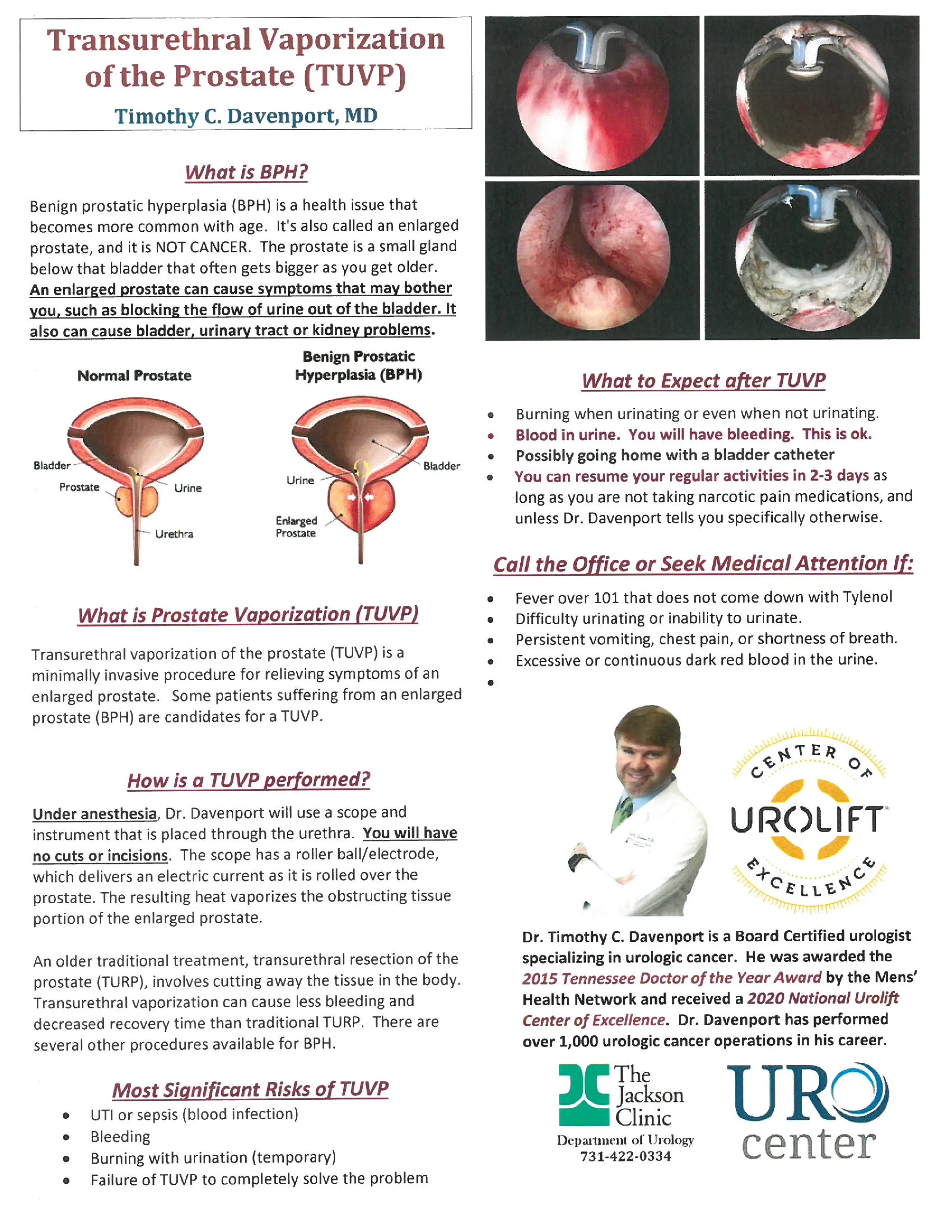Prostate enlargement, or benign prostatic hyperplasia (BPH), is a common condition among aging men. Most often characterized by bladder control problems, not all men experience symptoms, but those who do should consult their provider if those symptoms begin to interfere with daily activities.
Symptoms
The most common symptom of BPH is trouble urinating. This may include:
- A weak urine stream
- Difficulty starting urination
- Increased urinating at night
- Straining to urinate
- Not being able to completely empty the bladder.
Urinary tract infections and developing bladder stones are also symptoms of BPH. Patients experiencing these symptoms should schedule an appointment with their provider as soon as possible, as they may also be caused by a more serious condition such as prostate cancer.
Diagnosis
In order to diagnose BPH, providers will first collect detailed information about the symptoms being experienced.
A digital rectal exam will allow observation on the physical state of the prostate gland; a neurological exam will reveal any loss of nerve function crucial to proper urinary function; and a urinalysis allows doctors to rule out infections or any other condition.
Treatment
Treatments for BPH ranges from medication to surgery, depending on the severity of the symptoms experienced and the health risks involved for the patient.
Common treatments include drugs such as alpha blockers, 5 alpha reductase inhibitors, a combination of the two, or PDE 5 inhibitors.
If symptoms are too much of a health risk to moderate with drug treatments, doctors may recommend any one of many surgical options to correct BPH. TURP (transurethral resection of the prostate) is a common choice, though TUIP (transurethral incision of the prostate) is more appropriate for patients at risk for complications with other surgeries. Transurethral vaporization of the prostate (TUVP) is another minimally invasive procedure to relieve symptoms of an enlarged prostate.

